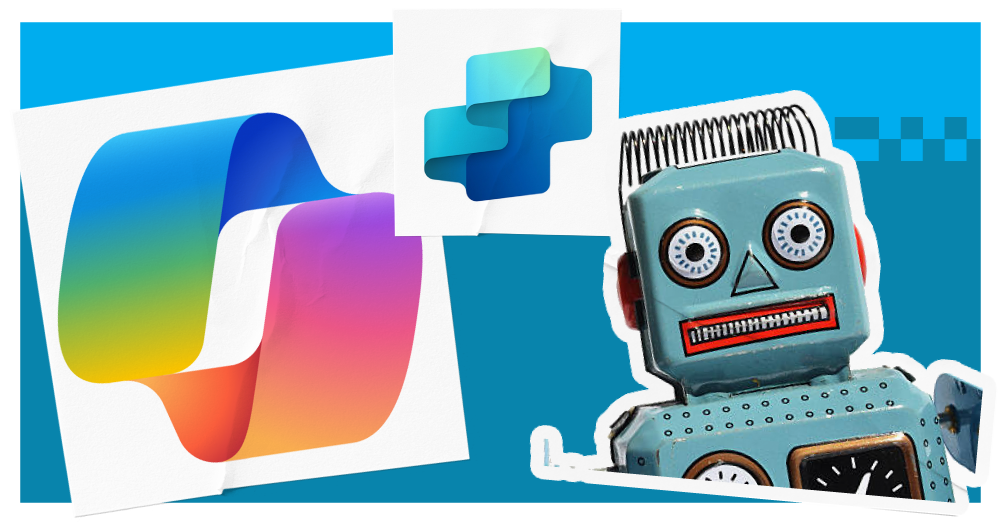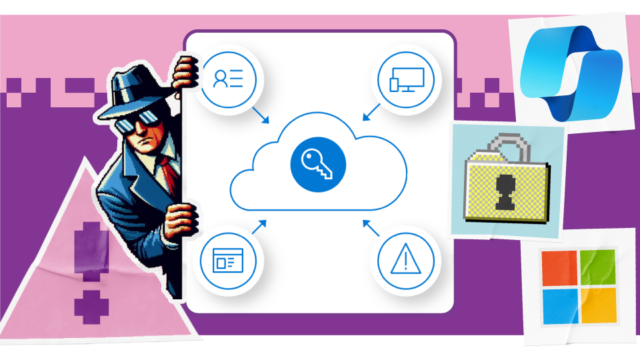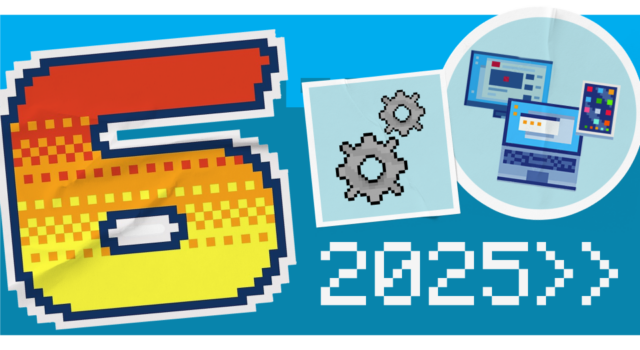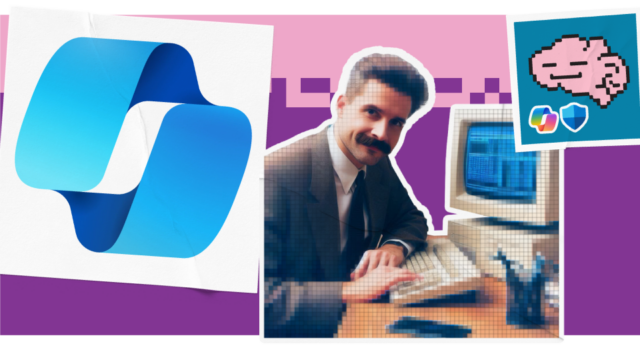The AI landscape continues to evolve rapidly, with tech companies constantly bringing new iterations to the market to drive productivity for businesses.
For the last few years, the emphasis has been on conversational AI which can answer questions, generate content and even analyse data sets. You simply need to ask it what you need and it’ll reply with text or maybe even code in seconds.
However, you’ve still needed to enact the recommendations of AI yourself. It can tell you what to do, but it can’t do it for you. Until now.
This year, agentic AI has burst onto the scene. This is AI which can autonomously do specific tasks. For example: turn off heating once a room reaches a certain temperature, without any need for manual intervention.
Agentic AI has already become a buzzword in the last few months. If you’ve heard the noise, you may be asking what it is and whether it’s worth pursuing for your business. We’re here to answer exactly that.
What is agentic AI?
Agentic AI marks a shift from how we have known AI in the last few years. It moves beyond data analysis and content generation towards systems that can autonomously perceive, reason, act, learn and collaborate. These AI agents have the potential to tackle complex, multi-step problems with minimal human oversight, adapting to dynamic environments and making decisions in real-time.
Whereas generative AI has always been described as your helpful assistant, an AI agent is more like a full member of your team. It can complete tasks at the right time, independently, to meet specific requirements and deadlines. For example, you can have a finance administrator agent that automatically reconciles bank transactions, making end-of-month reporting simpler.
Agentic AI’s ability to execute tasks sets it apart from generative AI. It can follow specific steps required to complete a task and anticipate incoming obstacles. It can also connect to your external tools and systems to bridge gaps, including ERP and CRM systems, allowing automated workflows. Moreover, it can retain context from past interactions to improve future responses.

These four characteristics make agentic AI extremely promising.
But while agentic AI is potentially revolutionary as a concept, it’s still early days. This is something that has only recently burst onto the scene, so both tech leaders and AI users are figuring out how powerful it can be.
And, thanks to Microsoft, it is becoming increasingly accessible for businesses of different shapes and sizes.
What are Copilot Agents?
Copilot Agents are Microsoft’s take on agentic AI, tailored to specific business use cases. The agents act as automatic bots with AI capabilities, enabling you to alleviate manual work and minimise intervention.
Watch our explainer video to find out how they work in more detail:
There are three ways to use agents, from simple to more advanced:
- Retrieve information, using your data, applying reason and summarising to answer user questions (such as a helpdesk agent)
- Complete tasks, using automation to replace repetitive work (such as a bank reconciliation agent)
- Operate independently, with the ability to plan responses, orchestrate other agents and escalate issues (such as an agent that researches and qualifies leads)
Copilot Agents can be built and customised with Copilot Studio. Previously, Copilot Studio has been associated with conversational Copilots – now you have the option to create both.
What’s the difference between a Copilot and a Copilot Agent?
Where a Copilot Agent differs from a Copilot is its capabilities.
A Copilot built in Copilot Studio can understand questions and offer you contextualised answers and ideas. This means it’s ideal for generating content, analysing data or sharing information. You may need to continuously prompt it to get more information or improve output.
A Copilot Agent, on the other hand, is designed to take on tasks and complete them independently. Once you configure triggers and the actions you want the agent to take, it can do them automatically without you needing to intervene again. It can also connect across data sources to ensure consistent information and workflows.
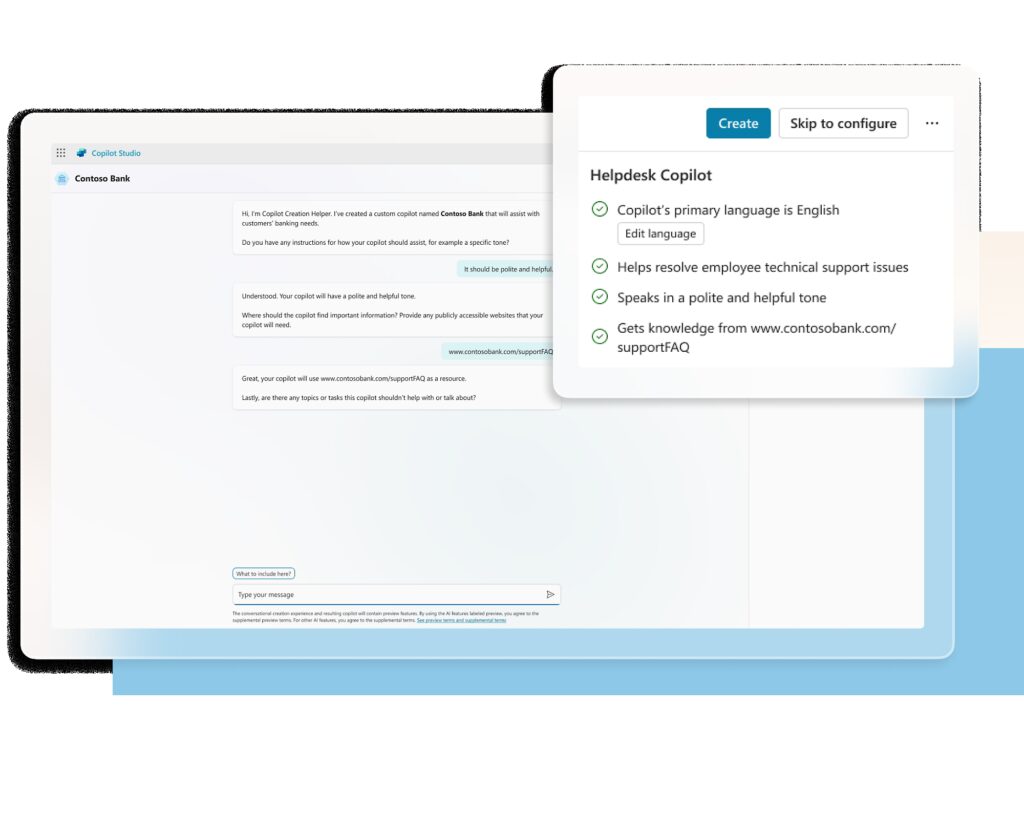
image courtesy of Microsoft
How you can apply Copilot Agents in your business processes_
There are plenty of ways you can apply Copilot Agents within your business.
Use pre-built agents
Microsoft have pre-built 26 agents to inspire you, including:
- Website Q&A: Answers common questions from users using content from your website
- Team Navigator: Assists employees in finding colleagues and where they sit within the organisation’s hierarchy
- IT Helpdesk: Helps employees quickly create and view support tickets
- Store Operations: Enables easy access to store procedures and policies for retail workers
- Case Management: Provides 24/7 automated support to customers by understanding their issues and creating cases
- Safe Travels: Provides answers to common travel questions and related health and safety guidelines
- Inclusivity: Helps employees ask questions in a safe space to improve inclusivity in the workforce
- Sustainability Insights: Provides insights about a company’s sustainability goals and progress
- Weather: Gets the current weather conditions and forecast
- Benefits: Provides personalised information on employee benefits
- Citizen Services: Enables Public Sector Organisations to assist their citizens with relevant service information
- Financial Insights: Helps financial services professionals get information from their organisation’s financial documents
- Self-Help: Empower customer service agents to resolve issues swiftly
- Awards and Recognition: Enables users to nominate and recognise employees for their achievements
- Leave Management: Streamlines the leave request process
- Wellness Check: Conducts automated wellness checks to monitor employee morale
- Sales Qualification Agent: Enables sellers to focus on the highest priority sales opportunities
- Sales Order Agent: Automates the order intake process from entry to confirmation based on customer interactions
- Supplier Communications Agent: Autonomously manages suppliers, such as confirming order delivery
- Finance Reconciliation Agent: Helps teams cleanse data sets to simplify the financial period close process
- Account Reconciliation Agent: Automates the matching and clearing of transactions between subledgers and the general ledger
- Time and Expense Agent: Manages time entry, expense tracking and approval workflows
- Customer Intent Agent: Enables self-service by monitoring past and current customer conversations across all channels, mapping issues and storing resolutions
- Customer Knowledge Management Agent: Helps keep knowledge articles up to date by analysing case notes, transcripts and summaries
- Case Management Agent: Automates key tasks throughout the case life cycle
- Scheduling Operations Agent: Enables dispatchers to provide optimised schedules for technicians in real-time
While not all these agents will be relevant to your business, they can get you started and help you see what’s possible with Copilot Agents. These pre-built bots can also be customised to connect to your data and meet your specific needs.
On top of this, there are agents available in Microsoft 365 and Copilot Studio agent builder (including careers coaches, writing coaches and meeting facilitator bots), which you can configure and customise to work with your processes and data within these platforms.
Build your own Copilot Agent_
You can also create your own AI agents, ready to conduct the specific tasks you want. Copilot Agents can be built to work on web, in Microsoft 365, Teams and many other channels.
Agents can be created easily within Copilot Studio. You simply need to configure it with the specific task you want it to complete, provide the knowledge base it should work from and set up actions and logic you want it to follow.
Fortunately, Copilot Studio has a user-friendly interface for building agents. You can use natural language to describe your agent’s capabilities or use a more visual, drag-and-drop interface. There are also built-in testing tools to simulate different scenarios and identify any issues.
We’ve got more advice on how to get started with Copilot Agents coming up.
Are there any limitations with Copilot Agents?
As with any form of AI, there are limitations and challenges you need to be aware of when implementing Copilot Agents.
Firstly, there are the ethnical and security considerations you should always make when working with AI. While Copilot Agents don’t analyse your data in the same way a typical Copilot might, it will still have access.
Make sure you understand the data that your agent will be accessing and how it will be used. It’s important to follow best practices for data security and privacy. This includes collecting only the information absolutely necessary for the agent’s intended purpose. You’ll also want to implement robust access controls, ensuring that sensitive data is accessible only to authorised personnel and the AI agents themselves, with strict limitations on what data each agent can access.
Next, it’s important to be realistic about what an agent can achieve. While the potential sounds exciting, agentic AI is in an early stage of development so cannot yet completely automate long, complex processes. Instead, focus on small steps within processes it can automate – like sending an email when a specific trigger has occurred. It is possible to chain together lots of agents for vaster automation across a process.
Finally, you’ll also need to build a business case for investment in AI agents. While initial results are promising, Copilot Agents are a new concept which businesses are still exploring. In order to get your organisation to commit, you’ll need to spend time scoping out potential use cases within your existing processes and communicate this to leadership.
You also need to be patient for results. The likelihood is it will take you some time to understand the best ways to apply agentic AI, which is when you’ll start to experience results and ROI. However, don’t fall into the trap of thinking this will happen on day one.
Our top tips for getting started with Copilot Agents_
1. Find your use cases_
As we’ve mentioned, finding the right use cases is crucial to getting value from Copilot Agents.
When first considering use cases, think of any tasks that require manual intervention or seem repetitive within your existing processes. Good examples might include data you need to manually update between systems, or tasks you need to execute once something else has happened (like order confirmation emails).
These repetitive tasks are often ideal for the autonomous capabilities of Copilot Agents. It’s worth arranging a small project group representing business areas to understand where these areas lay for different teams.
You can also look at the pre-built agents provided by Microsoft to kickstart inspiration, as many of these can be repurposed and tailored for your specific needs.
2. Start small_
We always recommend starting small when it comes to AI. This gives you a chance to experiment with the tools, understand the value and scale as you become more confident.
Copilot Agents work best at automating small steps within business processes. So, identify specific tasks you would like to automate, rather than trying to cover complex processes with one agent.
You can always chain together multiple agents across the process to reduce overall manual intervention.
As the concept of agentic AI grows and you become more confident in Copilot Studio, you may be able to move onto bigger tasks. But don’t be tempted to dive into this straight away or you’ll risk not getting results.
3. Spend time working on the detail_
It’s crucial not to skim over the level of detail needed to effectively introduce an AI agent into a process. Often, the start and end is easy: you want it to do X when ever Y happens.
However, everything that happens in between is harder. You need to carefully plot out the actions you want the AI to follow, based on different scenarios that might occur and the rationale you want it to apply.
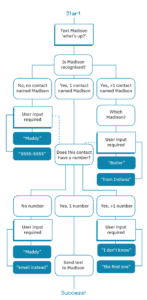
Spend time considering this middle part, mapping out possible scenarios that may happen and how the AI should respond in each. Then, test every scenario to ensure you have a sound logic.
Once you pin this down, you’ll have a bot truly capable of operating independently – but it takes time to get there.
4. Experiment_
Creating your first agent is often the hardest. However, once you start to understand how they work and their potential value, it’ll become easier to iterate and create new agents.
As you become more confident, you can also begin to experiment with different types of agents and input them into your individual business processes. This is a great way to uncover your best use cases and monitor the impact.
We recommend creating an internal AI working group, ideally with representatives from different business areas, who can explore the benefit of agents in their own roles and report back. This can fuel adoption and ROI, while helping you gain a competitive advantage as the agentic AI trend begins to grow.
5. Explore Microsoft resources_
Microsoft have put significant emphasis on Copilot Agents in 2025 already. As a result, there are plenty of good resources to support you as you explore and embed them into your business.
This includes the Copilot Success Kit, which includes a library of resources covering everything Copilot and Copilot Agents. Within this kit, you’ll find guidance to build your own Copilots alongside potential uses for your business.
Microsoft and its partners also run regular ‘Copilot Studio in a day’ workshops which are practical sessions, designed to help you understand and build better bots in Copilot Studio. There are also short digital courses available via Microsoft Learn.
On top of this, Infinity Group offer specific workshops that can help your business prepare for AI agents, including our AI Readiness Assessment. During these workshops, our experts will help you prepare your data for AI, address risks, find potential uses and build a phased roadmap to encourage healthy adoption.
Getting started with Copilot Agents_
Copilot Agents has already dominated discussion and this trend is likely to continue. By exploring it for your business now, you can get ahead of the curve and start experiencing the benefits while your competitors are still playing catch up.
If you’re looking for more guidance to get start, we’re here to help. Our Inner Circle status with Microsoft gives us access to the latest insights on Copilot Agents, meaning we can share incoming developments with you and help you find your use cases. Just get in touch to speak to our Copilot experts.
And if you want to understand how Copilot Agents can work in tandem with the Microsoft tools you already use, our Unlocking the power of Microsoft Business Applications in-person event is for you.
Join us in Birmingham on 20th March to explore Dynamics 365 and Power Platform, understand how to unlock greater value from your Business Applications and gain insight into Microsoft’s continued investment in AI and automation. Tailored workshops throughout the day will ensure you gain relevant expertise for your business.
